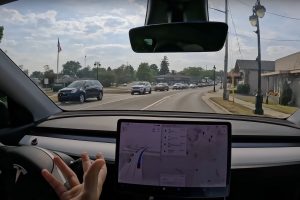- 💼 Chinese NEV automaker BYD released its March 2024 delivery report, including Q1 2024 estimates.
- 📊 BYD delivered approximately 301,631 passenger vehicles in March 2024, consisting of 139,902 fully electric cars and 161,729 plug-in hybrids.
- 🚗 For Q1 2024, BYD delivered 300,114 all-electric vehicles and 324,284 plug-in hybrid cars, with plug-in hybrids slightly outselling all-electric vehicles.
- 📈 BYD’s year-over-year all-electric car sales grew by 36%, while hybrid sales grew by 56%.
- 📉 Tesla is expected to surpass BYD’s delivery results for Q1 2024, with Wall Street estimates ranging between 425,000 and 430,000 units.
- 📉 Wedbush Securities analyst Dan Ives predicts a challenging quarter for Tesla China in Q1 2024, with trimmed production output and potential demand issues.
- 📉 Morgan Stanley analyst Adam Jonas reduced his Q1 2024 delivery estimate for Tesla to 425.5k units but maintained an Overweight rating for TSLA.
As the electric vehicle (EV) market continues to evolve, the release of delivery reports by key players provides valuable insights into industry trends and performance. In this blog post, we delve into Chinese new energy vehicle (NEV) automaker BYD’s March 2024 delivery report, highlighting key figures and analyzing their implications for the EV landscape.
Understanding BYD’s March 2024 Delivery Report
BYD’s March 2024 delivery report offers a comprehensive overview of the company’s performance during the month, as well as insights into its performance for the first quarter of 2024. Let’s break down the key takeaways from the report:
- March 2024 Deliveries:
- BYD delivered approximately 301,631 passenger vehicles in March 2024, comprising 139,902 fully electric cars and 161,729 plug-in hybrids.
- Q1 2024 Performance:
- For the first quarter of 2024, BYD delivered 300,114 all-electric vehicles and 324,284 plug-in hybrid cars. Notably, plug-in hybrids slightly outsold all-electric vehicles during this period.
- Sales Growth:
- BYD’s year-over-year sales growth paints a positive picture, with all-electric car sales growing by 36% and hybrid sales growing by an impressive 56%.
Implications for the EV Market
BYD’s delivery report offers valuable insights into the state of the EV market and sheds light on broader industry trends. Here are some implications to consider:
- Competition in the EV Sector:
- BYD’s strong performance underscores the intense competition within the EV sector, with both established players and newcomers vying for market share. As BYD continues to expand its product lineup and improve its offerings, competitors will need to innovate to stay ahead.
- Consumer Preferences:
- The sales figures for all-electric cars versus plug-in hybrids highlight shifting consumer preferences in the EV market. Understanding these preferences is crucial for automakers to tailor their product offerings and marketing strategies effectively.
- EV Adoption and Sustainability:
- The growth in sales of both all-electric and hybrid vehicles signals increasing consumer interest in electric and hybrid technology. This trend bodes well for the broader goal of transitioning towards sustainable transportation and reducing carbon emissions.
Looking Ahead: Tesla’s Performance and Market Expectations
While BYD’s delivery report provides valuable insights, attention is also turning towards Tesla’s performance and market expectations for the first quarter of 2024. Analysts anticipate Tesla surpassing BYD’s delivery results, with estimates ranging between 425,000 and 430,000 units.
- Analyst Projections:
- Analysts like Dan Ives from Wedbush Securities and Adam Jonas from Morgan Stanley have weighed in on Tesla’s anticipated performance. While some foresee potential challenges for Tesla China, others maintain a positive outlook and reaffirm their bullish stance on the company’s prospects.
Conclusion: Navigating the Evolving EV Landscape
As the EV landscape continues to evolve, delivery reports serve as vital indicators of market dynamics and company performance. BYD’s March 2024 delivery report offers valuable insights into the state of the industry, highlighting trends in consumer preferences, sales growth, and competition. As stakeholders navigate this rapidly changing landscape, staying informed and adaptable will be key to success.





